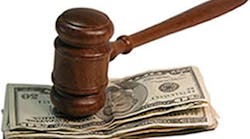Ten Safeguards Against Consumer Lawsuits
Over the last two years, manufacturers and sellers of consumer products across the industrial spectrum have faced growing wave of class-action lawsuits brought by consumers.
These lawsuits typically allege that the product label or packaging, or the product website, contain false, misleading or unproven claims, or omit information material to consumers’ purchase decisions.
The potential damages can be enormous – a full refund of the price paid by each consumer.
State laws permitting such claims are very broad, typically declaring unlawful any deceptive, unlawful, or unfair practice. Targets have ranged from packaged foods to cosmetics, tools and hardware to automobiles.
Hardly any consumer product is immune to such a charge, not because advertising is literally false or consumers are actually deceived, but because the charge is often very easy to make.
So how can you minimize the chance of finding yourself the target of a complaint about phantom deception, where no one has really been tricked and nothing really material has been concealed or falsified?
The short answer: Make yourself an unappealing target. Some tactics and strategies are more likely to discourage the opportunistic litigant.
Here are a few to consider. All require sound judgment and careful balancing of marketing considerations, regulatory strictures where applicable and internal costs.
1. Be skeptical, but not defensive.
Look at the claims made about your products on the label and packaging, on the product website and in other advertising. Bring a degree of skepticism to that exercise. Are the statements literally true and complete? Could they be construed as misleading? Does the product claim benefits or effects that may be dubious or at least hard to prove? Do the claims comply with any governing regulations?
The object is to sift what is arguably not accurate, or potentially misleading or incomplete. This does not mean that advertising must be so colorless and uninformative, so neutered of content that it tells consumers nothing of value. There is a balance to be struck, and testing the marketing message with a skeptical eye is the best protection against a lawsuit.
2. Variety makes for safer marketing.
Vary the promotional messages over time and place. Change the theme, the emphasis, the images, the words. Why? The more variety there is in how you promote, the harder it is for a class-action plaintiff to prove that every consumer was taken in by the same misleading message. If your advertising pattern rebuts the hypothesis of a common misleading message, the chance of avoiding a class action lawsuit is much greater.
3. “Puffery” requires planning.
It is tempting to suppose that advertising challenged by consumers is usually sales “puffery,” subjective opinions that no reasonable person would take as statements of literal fact. Courts are reluctant to see it that way. Judges are more disposed to let a jury decide the question. But you can tilt this bias a bit in your direction by lacing your advertising with opinion words that provide anchors for a “puffery” defense. This means thinking in advance about what words to use, where and why.
4. Consumers are not all alike.
Consumers know that not everyone has the same experience with every product, especially when that experience depends on the consumer’s individual characteristics or usage. For example, people vary in their response to food, medications and similar products. They use products differently and under different circumstances with different results. Marketing messages that acknowledge this are less exposed to litigation. So marketing messages that do not imply that every consumer will have the same experience are less attractive litigation targets.
5. Terms of sale make a difference.
Recent decisions by the U.S. Supreme Court have bolstered enforcement of contractual arbitration agreements and class action waivers. How can you take advantage of that in sales to consumers? Putting a comprehensive arbitration clause and a class action waiver on a box or other packaging may be impractical, but adding these to a website is not. Doing that effectively is more challenging, and consideration might be given to whether the package label can effectively refer to other terms of sale.
6. Warranties don’t help.
Almost any statement about the product can be construed as warranty even if not intended as such. One solution may be to disavow all express warranties, unless they serve a business purpose. Doing this will not confer immunity from suit, but denying the availability of an express warranty claim is one more layer of protection against unwarranted claims.
7. The customer is always right.
OK, maybe they’re not, but it’s cheap insurance to treat them as if they were. One way to do this is to offer a refund – “If you are not completely satisfied for any reason, we’ll refund your money.” Many companies do this just because it’s smart business. It also offers some protection against class-action lawsuits. As one court noted recently, if any customer can get a refund just by asking, there’s little reason for a class action.
8. A customer “hotline, and market research, can be helpful . . . or not.
A customer service “hotline” for complaints or compliments and surveys of consumers about the efficacy of product advertising can generate powerful data to rebut a threatened or actual class action. Properly analyzed, this kind of data can demonstrate the variable experience among consumers. Armed with this analysis, the seller is better equipped to discourage threatened class actions or resolve quickly any that are filed. Of course if the data show that consumers are influenced by uniform statements challenged as materially false or misleading, a different approach will be needed.
9. It’s OK to hit back.
Sometimes the allegation of false advertising strikes at the core of the company’s business. To avoid a protracted battle in that environment, where sales lost may never be recovered, an aggressive response may be the best path to minimizing the risk to the company. The objective is to demolish the claim swiftly, before irreparable damage is done and costs escalate. This effort requires close coordination among public relations, marketing, and legal teams. A deft hand and sound judgment are critical, lest the aggressive response boomerang.
10. Sometimes a penny of tribute is smarter than millions for defense.
In some states (California is one), the manufacturer may receive a statutory pre-lawsuit letter advising it of the claims and demanding relief. Not every case regardless of how meritless, justifies (and not every client can afford) all out war to defend marketing messages. Some cases should be settled quickly. If effected carefully, a quick settlement will end the risk, contain the cost, and allow the manufacturer or seller to get on with business. There is, to be sure, a risk of being labeled an easy target. Nonetheless, the sheer economics of class action litigation compel some hard analysis of whether to resolve a case before it is filed.
Like the dog whose bark may not stop the determined intruder but will scare off those looking only for an easy target, you want to make your products less attractive targets. The steps outlined above will not prevent all lawsuits, but they will discourage many.
Thomas P. Hanrahan, partner at Sidley Austin LLP, heads the firm’s Los Angeles Litigation Group and is Global Co-Chair of its Complex Commercial Litigation Practice. His practice includes significant experience in consumer fraud, antitrust, and product liability matters. Mr. Hanrahan can be reached at [email protected].
The opinions expressed herein are those of the authors and do not necessarily reflect the views of their respective firms, clients, or any affiliates of any of the foregoing. This article has been prepared for informational purposes only and does not constitute legal advice.




